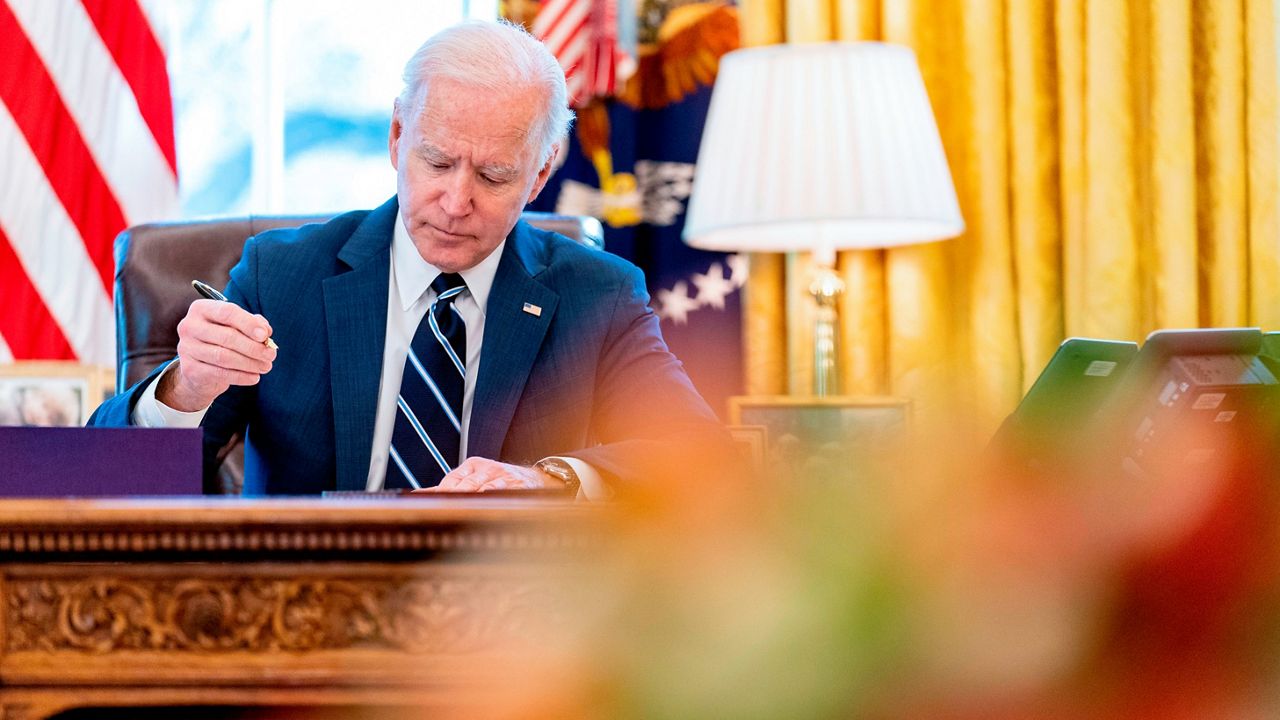One year after President Joe Biden signed Democrats’ $1.9 trillion coronavirus spending bill into law, the majority of the funds have gone out to states, schools, federal agencies and grantees across the country to boost things like health care, education, direct payments to families and the pandemic response.
But not all the money has been spent, and as the administration faces criticism for the highest inflation rate in decades, many Republicans also blame the infusion of billions of dollars in federal funds from the relief bill, or the American Rescue Plan (ARP), even as Biden officials call it essential to recovery.
As of early January, more than 90% of ARP funds “legally available” under the legislation had either been obligated or allocated to specific programs, a White House official told Spectrum News.
About 9% that remained unobligated was “by design,” the official added, including things like money set aside to renew emergency housing vouchers that were previously awarded and funds reserved to reimburse states’ COVID-19 spending with federal dollars.
One senior administration official said the ARP has “minimized … economic scarring” despite the pandemic.
“It is the dark truth of recoveries that many people don't recover,” they added, pointing to the drop in long-term unemployment over the last year as one positive example of the ARP’s impact.
This week, the White House has highlighted specific programs in the ARP they see as some of the most successful: the decline in child poverty due to the expanded child tax credit, health care subsidies that boosted insurance coverage and funding that went to historically black colleges and universities.
But conservatives have also criticized the injection of so much federal spending, saying it has hampered recovery and contributed to the 7.9% increase in inflation over the last year, a 40-year high. The COVID relief bill passed with only Democratic support in both the House and the Senate, and was signed into law by Biden on March 11, 2021.
“I don't think it's really a divisive question or matter as to whether or not the ARP was wasteful and unnecessary,” said William Yeatman, a research fellow at the CATO Institute.
The White House has responded to that criticism by acknowledging some inflationary impact but pointing out that not all the money was spent right away.
Of $4.6 trillion total budgeted for the pandemic since it began, $3.62 trillion has been disbursed and $4.15 trillion has been obligated, according to government data.
For the ARP money that hasn’t been spent, much of it is in the hands of states, local agencies and schools, which can use it according to their individualized needs.
“It was designed to have a big jumpstart at the beginning, but it was also designed — when we look at the state, local and the K-12 plans — to let people invest over over two or three years so they can take on learning loss, or homelessness challenges or things like that,” a senior administration official said.
“This may have had a marginal impact [on inflation] but not not a significant impact,” they added. “And with it came all the benefits that we've talked about.”
But critics say the real economic impact is yet to be determined.
“It would be difficult to assess its macroeconomic impact to the extent that, I understand, the scores of billions of dollars have yet to go out the door,” Yeatman added.
The Biden administration has most recently called for more than $22 billion in additional pandemic aid funding, a small fraction of the size of the American Rescue Plan, which included $85 billion for things like vaccines and testing.
Democrats negotiated a $15.6 billion package with Republicans, but it was dropped from a larger spending bill this week, leaving more coronavirus funding limbo for now.
See a breakdown of everything included in the 2021 American Rescue Plan on the government’s pandemic oversight website.



